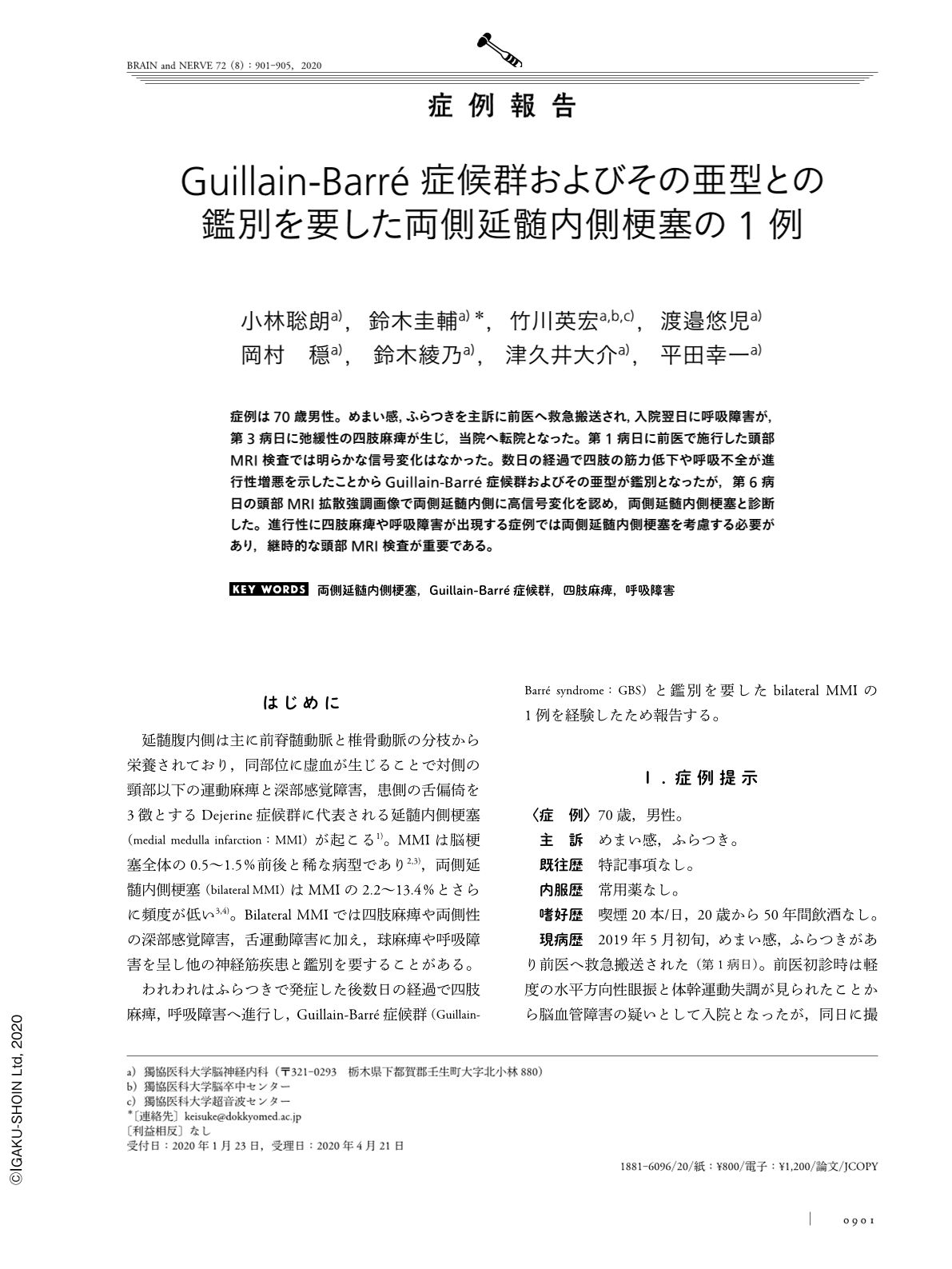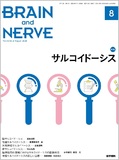Japanese
English
- 有料閲覧
- Abstract 文献概要
- 1ページ目 Look Inside
- 参考文献 Reference
症例は70歳男性。めまい感,ふらつきを主訴に前医へ救急搬送され,入院翌日に呼吸障害が,第3病日に弛緩性の四肢麻痺が生じ,当院へ転院となった。第1病日に前医で施行した頭部MRI検査では明らかな信号変化はなかった。数日の経過で四肢の筋力低下や呼吸不全が進行性増悪を示したことからGuillain-Barré症候群およびその亜型が鑑別となったが,第6病日の頭部MRI拡散強調画像で両側延髄内側に高信号変化を認め,両側延髄内側梗塞と診断した。進行性に四肢麻痺や呼吸障害が出現する症例では両側延髄内側梗塞を考慮する必要があり,継時的な頭部MRI検査が重要である。
Abstract
A 70-year-old man presented with dizziness and unsteadiness when standing and was hospitalized in another hospital. Magnetic resonance imaging (MRI) of the brain on Day 1 showed no abnormalities. The patient developed respiratory failure on Day 1and flaccid tetraplegia on Day 3, and was transferred to our hospital. Progressive upper and lower limb weakness and bulbar symptoms suggested Guillain-Barré syndrome or its variant. Diffusion-weighted MRI on Day 6 disclosed high signal intensities in the bilateral medial portion of the medulla, and the patient was diagnosed with bilateral medial medulla infarction. Bilateral medial medulla infarction should be considered when a patient shows progressive tetraplegia, and bulbar palsy and follow-up MRI is important to confirm the diagnosis.
(Received January 23, 2020; Accepted April 21, 2020; Published August 1, 2020)

Copyright © 2020, Igaku-Shoin Ltd. All rights reserved.


